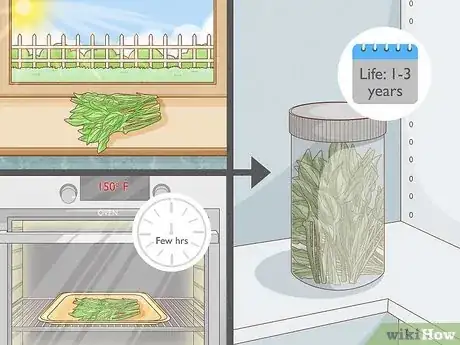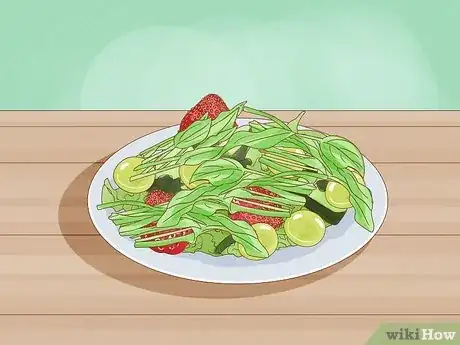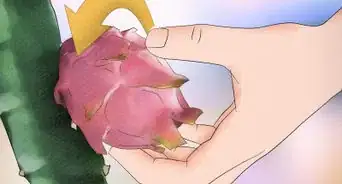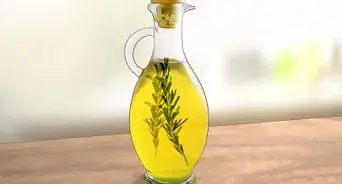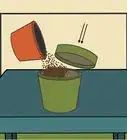This article was co-authored by Lauren Kurtz. Lauren Kurtz is a Naturalist and Horticultural Specialist. Lauren has worked for Aurora, Colorado managing the Water-Wise Garden at Aurora Municipal Center for the Water Conservation Department. She earned a BA in Environmental and Sustainability Studies from Western Michigan University in 2014.
There are 10 references cited in this article, which can be found at the bottom of the page.
wikiHow marks an article as reader-approved once it receives enough positive feedback. In this case, 100% of readers who voted found the article helpful, earning it our reader-approved status.
This article has been viewed 32,336 times.
Plantago, or plantains (not to be confused with the banana), are a type of herb that are naturally occurring in many parts of the world. While they may look like ordinary weeds, plantains have a wide range of applications, from topical pain relief to filling out mixed green salads. Once you know where and how to pick the herb, you can begin putting it to good use. Keep your eyes low to the ground in wet, marshy areas, then snip the broad green leaves free and take them home to preserve for homemade balms, medicines and recipes down the road.
Steps
Finding Plantains in the Wild
-
1Learn how to identify plantains. Plantains most often resemble small shrubs growing close to the ground. Their leaves are a bright green color, sometimes with hints of red or purple around the stems. They can either be broad or narrow, but almost always taper in a spade-like shape and feature multiple parallel veins lined up across the leaf.[1]
- Mature plantains produce small flowers that grow on thin, fuzzy stalks.
- There are over 200 species of plantains in existence, but they all share the same key physical characteristics.[2]
-
2Search for plantains in areas with lush growth. The herb can usually be found in places with thick grass and underbrush. Chances are, you have a few plantains growing in your own backyard. You may also have some luck turning up plantains in wet, humid areas like river banks and marshes. They tend to pop up in greater numbers following a heavy downpour.
- Plantains flourish in the early spring months when temperatures begin to rise.[3]
- Some variety of the plant or another can be found in almost every country on the planet.
- The herb is often mistaken for a harmful weed, which causes it to go unnoticed.
Advertisement -
3Harvest wild plantains only. To make sure you’re not putting your health at risk, only gather plantains that you find on uncultivated land. Stay away from herbs growing in spots where you’ve sprayed pesticides or spread fertilizer. These may retain traces elements of the chemicals, which can be harmful if ingested or applied to a wound.
- It’s advisable to pass up plantains that you find near the edges of private and commercial properties, as these have likely been treated with poisonous chemicals.
- Don’t pick leaves that appear slimy, shriveled or discolored. The plant may be suffering from a blight or disease.
Picking Plantain Leaves
-
1Pluck the plantain leaves by hand. Simply reach down and pull the leaves by the stalks to detach them from the base of the plant. It’s that easy! The tender leaves should come away with little resistance. Pick as many as you want, then move on to the next patch.[4]
- Plantains grow quickly and abundantly like weeds, so you won’t have to worry about killing the plant by picking too many at a time.[5]
- Make sure you bring along a basket, bucket or plastic bag to carry the leaves you’ve collected.
-
2Cut the leaves free with a pair of scissors. For young and hearty plants, a separate utensil may come in handy for cutting through the tough stalks. Snip the leaves at the narrowest part of the stalk, leaving the root section behind. In no time at all the leaves will grow back, replenishing your supply.[6]
- To harvest a whole patch, gather the leaves from the bottom, lift them up and cut across all the stalks at once.
- Using scissors requires less ripping and tugging, which makes you less likely to damage the leaves.
-
3Collect the seeds as well. You can find the seeds in the small pods growing at the tips of the slender flower stalks. Make sure you peel the fibrous chaff back from the seeds themselves before processing or cooking with them. Like the leaves of the plant, plantain seeds can be ground and used in a host of holistic therapies.
- Pick the seeds once they’ve turned brown or black—green seeds will be too tough and fibrous to be of any use.[7]
- Plantain seeds have a nutty, slightly spicy flavor. They go well in flours and homemade tea mixes, or simply roasted and eaten as a snack.
Storing and Using Plantains
-
1Wash the plantain leaves with cool water. Place the plantains in a colander and run them under the faucet, tossing occasionally to loosen dirt and debris. For especially dirty leaves, you can fill the sink or a shallow bowl and swirl them until the dirt has leached into the water.[8]
- If you’re uncertain about whether the herbs have been properly sanitized, try soaking them in a mixture of three parts water and one part apple cider vinegar.
- After rinsing the leaves, press them between layers of paper towels to absorb the excess water.
-
2Store unused leaves in the refrigerator. Preserve your freshly-picked plantain leaves by wrapping them loosely in a layer of damp paper towels and stashing them in the crisper drawer of your refrigerator. You can also slip them into a plastic bag—just make sure you squeeze all of the air out of the bag before you seal it.[9]
- When stored correctly, you can expect the leaves to keep for 3-5 days.[10]
- Like more other greens, plantain leaves will be best when eaten right away. After couple of days, they'll gradually begin to turn limp and soggy.
-
3Dry the leaves to preserve them. Once you get the plantain leaves home, press them between two broad, heavy surfaces to flatten them out. Afterwards, set the leaves out in direct sunlight for a few hours, or arrange them on a baking pan and put them in the oven on low heat (around 150 degrees or below) until they’re brittle to the touch.
-
4Use the leaves as a natural remedy. Plantain leaves are just as useful for making simple medicines as they are for making dinner. Blend fresh leaves with a small amount of water and apply the resulting paste topically as a poultice. The compounds that the herb contains are astringent, antimicrobial and anti-inflammatory, meaning they’re capable of killing bacteria and reducing swelling.[13]
- Spread plantain balm on cuts, scrapes, bee stings and minor skin infections to clear them up.[14]
- You can also grind dried leaves and steep them for a few minutes in hot water to make a soothing bath for sunburns and dry, itchy skin.
-
5Add plantains to your favorite healthy recipes. Another way to enjoy the many benefits of plantains is to eat them. Once you’ve washed the leaves, tear or chop them the way you would similar greens like lettuce or spinach. The herb will be right at home when served raw in a salad, sautéd with fresh seasonal veggie or blended into a rich pesto or green smoothie.[15]
- Plantains have a mild earthy flavor not unlike mushrooms or kale. This makes them a versatile ingredient that can be incorporated into many different dishes.[16]
Warnings
- Plantains can easily be confused for other weeds that may not be as safe to ingest. Study the physical characteristics of the herb so that you’ll know what you’re looking at when you see it.⧼thumbs_response⧽
- Avoid hunting for plantains on private property, or anywhere else you’re not supposed to be.⧼thumbs_response⧽
- Plantains can make a handy natural treatment in a pinch, but they shouldn’t be used to replace conventional medicine.⧼thumbs_response⧽
Things You'll Need
- Basket, bucket or bag
- Scissors
- Colander
- Baking pan
- Airtight lidded jar or plastic bag
- Water
- Apple cider vinegar (optional)
References
- ↑ http://ledameredith.com/foraging-plantain-leaves-for-food-and-medicine-no-not-that-plant/
- ↑ https://nogreaterjoy.org/articles/herb-lesson-plantain/
- ↑ http://www.eattheweeds.com/white-mans-little-foot-dwarf-plantain-2/
- ↑ https://raising6kids.wordpress.com/2013/06/07/pickin-plantain-medicinal-weed/
- ↑ http://ledameredith.com/foraging-plantain-leaves-for-food-and-medicine-no-not-that-plant/
- ↑ http://www.offthegridnews.com/off-grid-foods/3-ways-to-cook-plantain-the-spinach-like-survival-weed/
- ↑ http://ledameredith.com/foraging-plantain-leaves-for-food-and-medicine-no-not-that-plant/
- ↑ https://raising6kids.wordpress.com/2013/06/07/pickin-plantain-medicinal-weed/
- ↑ https://www.thekitchn.com/your-guide-to-storing-fresh-herbs-in-the-fridge-231412
- ↑ https://www.incrediblesmoothies.com/green-smoothies/how-to-wash-and-store-fresh-greens/
- ↑ https://theherbalacademy.com/6-tips-for-storing-dried-herbs/
- ↑ http://www.stilltasty.com/articles/view/67
- ↑ https://nogreaterjoy.org/articles/herb-lesson-plantain/
- ↑ https://www.mommypotamus.com/plantain-salve-recipe/
- ↑ http://ledameredith.com/foraging-plantain-leaves-for-food-and-medicine-no-not-that-plant/
- ↑ http://www.eattheweeds.com/white-mans-little-foot-dwarf-plantain-2/








